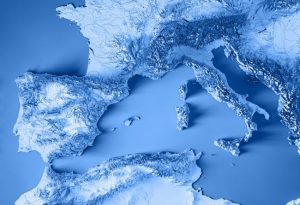Hidden beneath the waves of the Tyrrhenian Sea near southwestern Italy lies a newfound volcanic mosaic dotted with geothermal chimneys and flat-topped seamounts.
This complex is new to both science and the planet, geologically speaking; it’s only about 780,000 years old. Scientists aren’t particularly surprised to find volcanism in the region, which is home to active volcanoes like Mount Vesuvius and Mount Etna. But the new complex is unusual because it was created by a rare kind of fault, said study leader Fabrizio Pepe, a geophysicist at the University of Palermo, in Italy.
“This is a very complex area,” Pepe told Live Science.
The western Mediterranean is seismically restless because of the collision of three tectonic plates: the African, the Eurasian and the Anatolian. Making matters more complex is a small chunk of crust called the Adriatic-Ionian microplate, which broke off of the African Plate more than 65 million years ago and is now being pushed under the larger Eurasian Plate in a process called subduction. Mount Vesuvius is one of the volcanoes created by subduction.
Previously, scientists discovered a series of undersea volcanic arcs created by this tectonic unrest, starting near the Sardinian coast, with increasingly younger arcs southward and eastward. These arcs were like an arrow pointing ever farther eastward, prompting Pepe and his colleagues to search for an even younger arc about 9 miles (15 kilometers) off the coast of Calabria, called the “toe” of the “boot” of Italy.
Read more HERE
Ask me anything
Explore related questions





